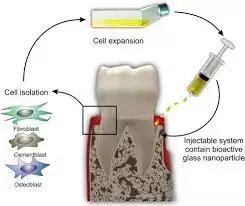- Home
- Medical news & Guidelines
- Anesthesiology
- Cardiology and CTVS
- Critical Care
- Dentistry
- Dermatology
- Diabetes and Endocrinology
- ENT
- Gastroenterology
- Medicine
- Nephrology
- Neurology
- Obstretics-Gynaecology
- Oncology
- Ophthalmology
- Orthopaedics
- Pediatrics-Neonatology
- Psychiatry
- Pulmonology
- Radiology
- Surgery
- Urology
- Laboratory Medicine
- Diet
- Nursing
- Paramedical
- Physiotherapy
- Health news
- Fact Check
- Bone Health Fact Check
- Brain Health Fact Check
- Cancer Related Fact Check
- Child Care Fact Check
- Dental and oral health fact check
- Diabetes and metabolic health fact check
- Diet and Nutrition Fact Check
- Eye and ENT Care Fact Check
- Fitness fact check
- Gut health fact check
- Heart health fact check
- Kidney health fact check
- Medical education fact check
- Men's health fact check
- Respiratory fact check
- Skin and hair care fact check
- Vaccine and Immunization fact check
- Women's health fact check
- AYUSH
- State News
- Andaman and Nicobar Islands
- Andhra Pradesh
- Arunachal Pradesh
- Assam
- Bihar
- Chandigarh
- Chattisgarh
- Dadra and Nagar Haveli
- Daman and Diu
- Delhi
- Goa
- Gujarat
- Haryana
- Himachal Pradesh
- Jammu & Kashmir
- Jharkhand
- Karnataka
- Kerala
- Ladakh
- Lakshadweep
- Madhya Pradesh
- Maharashtra
- Manipur
- Meghalaya
- Mizoram
- Nagaland
- Odisha
- Puducherry
- Punjab
- Rajasthan
- Sikkim
- Tamil Nadu
- Telangana
- Tripura
- Uttar Pradesh
- Uttrakhand
- West Bengal
- Medical Education
- Industry
Bioactive glass use highly beneficial as remineralizing additive in dental composites

Bioactive glass use is highly beneficial in dentistry, according to a recent study published in Dental Materials.
In recent years, numerous studies have analyzed the role of bioactive glass (BAG) as remineralizing additives in dental restorative composites. This current review provides a critical analysis of the existing literature, particularly focusing on BAGs prepared via the melt-quench route that form an "apatite-like" phase when immersed in physiological-like solutions.
Online databases (Science Direct, PubMed and Google Scholar) were used to collect data published from 1962 to 2020. The research papers were analyzed and the relevant papers were selected for this review. Sol-gel bioactive glass (BAG) was not included in this review since it is not a cost-effective manufacturing technique that can be upscaled and is difficult to incorporate fluoride.
The Results of the study are as follows:
BAGs release Ca2+, PO43− and F− ions, raise the pH and form apatite. There are numerous published papers on the bioactivity of BAGs, but the different glass compositions, volume fractions, particle sizes, immersion media, time points, and the characterization techniques used, make comparison difficult. Several papers only use certain characterization techniques that do not provide a full picture of the behaviour of the glass. It was noted that in most studies, mechanical properties were measured on dry samples, which does not replicate the conditions in the oral environment. Therefore, it is recommended that samples should be immersed for longer time periods in physiological solutions to mimic clinical environments.
Thus, the researchers concluded that bioactive glass (BAGs) present major benefits in dentistry, especially its capacity to form apatite, which could potentially fill any marginal gaps produced due to polymerization shrinkage.
Reference:
A study named, "The use of bioactive glass (BAG) in dental composites: A critical review" by Melissa Tiskaya et al published in the dental materials.
Dr. Shravani Dali has completed her BDS from Pravara institute of medical sciences, loni. Following which she extensively worked in the healthcare sector for 2+ years. She has been actively involved in writing blogs in field of health and wellness. Currently she is pursuing her Masters of public health-health administration from Tata institute of social sciences. She can be contacted at editorial@medicaldialogues.in.
Dr Kamal Kant Kohli-MBBS, DTCD- a chest specialist with more than 30 years of practice and a flair for writing clinical articles, Dr Kamal Kant Kohli joined Medical Dialogues as a Chief Editor of Medical News. Besides writing articles, as an editor, he proofreads and verifies all the medical content published on Medical Dialogues including those coming from journals, studies,medical conferences,guidelines etc. Email: drkohli@medicaldialogues.in. Contact no. 011-43720751


